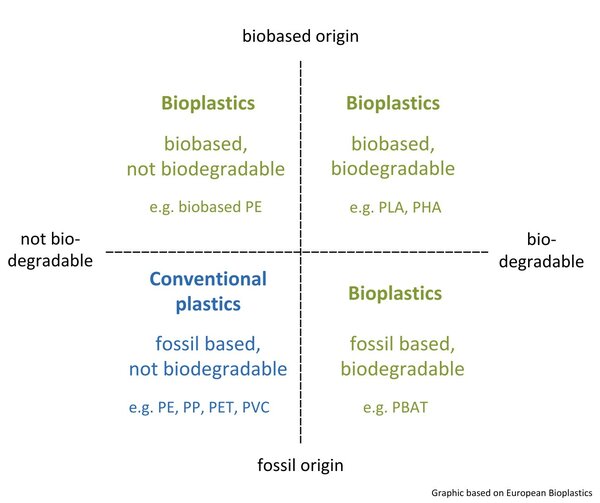Biodegradability is a material’s ability to be transformed into natural components by micro-organisms.
When atmospheric oxygen is present, this process results in carbon, water, biomass and minerals. Under anaerobic conditions, that is in the absence of atmospheric oxygen, the material breaks down into carbon, methane, biomass and minerals.
There is no general standard defining biodegradability. The biodegradation process and its duration depend on the material’s composition and dimensions as well as the surrounding conditions such as temperature, humidity, UV radiation etc.
Biodegradation may for example happen in soil, in the ocean or in the compost.
To successfully be biodegraded, a product does not necessarily have to be biobased. There are also few biodegradable materials of fossil origin, e.g. PBAT. Examples of biobased and biodegradable plastics are PLA and PHA.

There is a clear difference between the terms “biodegradation” and “degradation”: Biodegradable materials break down into components occurring in nature, whereas degradation simply is the fragmentation of plastic parts into microplastics over a long period of time.